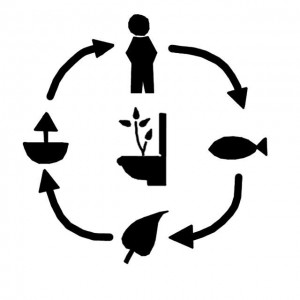Refugees and Internally Displaced People (IDPs) in Rural Settings often tend to settle in the poorest and most unfavorable areas, which may lack basic infrastructure and services. Thus, they experience an especially strong need for proper sanitation facilities to protect their health and reduce disease transmission.
Instead of building up a parallel sanitation system for refugees and IDPs in rural areas, the aim of humanitarian intervention for sanitation in rural settings is to integrate refugees and IDPs into national sanitation services to a level that is comparable to that of rural host communities. However, rural settings present a number of challenges, including the inadequateness or weakness of existing sanitary facilities, the dispersion of both the sanitation services and the refugees/IDPs across large areas as well as the potential competition for resources between the displaced communities and the local host communities.
The The Sphere Project Standards/sanitation-systems/sanitation-technologies/ provides guidance on Minimum Standards for implementing sanitation interventions for excreta disposal and drainage for rural settings:
- SPHERE, Water, Sanitation, and Hygiene (WASH) Standard 1: WASH Programme design and Implementation. WASH needs of the affected population are met and users are involved in the design, management and maintenance of the facilities where appropriate.
- SPHERE, Excreta Disposal Standard 1: Environment free from human faeces. The living environment in general and specifically the habitat, food production areas, public centres and surroundings of drinking water sources are free from human faecal contamination.
- SPHERE, Excreta Disposal Standard 2: Appropriate and adequate toilet facilities. People have adequate, appropriate and acceptable toilet facilities, sufficiently close to their dwellings, to allow rapid, safe and secure access at all times, day and night.
- SPHERE, Drainage Standard 1: Drainage work. People have an environment in which health risks and other risks posed by water erosion and standing water, including storm water, floodwater, domestic wastewater and wastewater from medical facilities, are minimised.
In order to fulfill th/sanitation-systems/sanitation-technologies/e minimum requirements, it is vital that collaboration and coordination between the various villages, districts and national authorities, as well as consistent, effective monitoring and follow-up strategies are set up at an early stage. Existing sanitation facilities must be verified and new sanitation facilities should be constructed evenly throughout the area where refugees or IDPs settle. Host communities and refugees should both be provided with means and guidance on maintaining the sanitation facilities.
The section below presents a selection of sanitation systems and technologies appropriate for Rural Settings. Although the selection was performed by a team of experts, practitioners should always consider the local environmental, technical, financial, social and economic framework conditions when selecting technologies. For the full range of available sanitation systems and technologies, please consult the Compendium of Sanitation Systems and Technologies.
Compendium of Sanitation Systems and Technologies. 2nd Revised Edition
This compendium gives a systematic overview on different sanitation systems and technologies and describes a wide range of available low-cost sanitation technologies.
TILLEY, E., ULRICH L., LÜTHI, C., REYMOND P. and ZURBRÜGG C. (2014): Compendium of Sanitation Systems and Technologies. 2nd Revised Edition. Duebendorf, Switzerland: Swiss Federal Institute of Aquatic Science and Technology (Eawag) URL [Accessed: 03.05.2023] PDFThe Sphere Handbook
This appendix of SPHERE handbook is a water supply and sanitation initial needs assessment checklist. This list of questions is primarily for use to assess needs, identify indigenous resources and describe local conditions. It does not include questions to determine external resources needed in addition to those immediately and locally available.
THE SPHERE PROJECT (2011): The Sphere Handbook. Rugby: Practical Action Publishing URL [Accessed: 19.10.2016]Compendium of Sanitation Systems and Technologies (Arabic)
This is the Arabic version of the Compendium of Sanitation Systems and Technologies. The Compendium gives a systematic overview on different sanitation systems and technologies and describes a wide range of available low-cost sanitation technologies.
TILLEY, E. ULRICH, L. LUETHI, C. REYMOND, P. SCHERTENLEIB, R. ZURBRUEGG, C. (2014): Compendium of Sanitation Systems and Technologies (Arabic). 2nd Revised Edition. Duebendorf, Switzerland: Swiss Federal Institute of Aquatic Science and Technology (Eawag) PDFAlternatives To Camps - Response In Urban And Rural Settings
WASH in Rural Areas
This entry discusses WASH responses in rural dispersed settings. WASH interventions help to improve hygiene and health, and reduce morbidity and mortality among both refugees and host populations. In the first phases of an emergency, a WASH response in rural dispersed settings focuses on identifying WASH infrastructural gaps and needs, and software components required, as well as monitoring the WASH situation.
UNHCR (2015): WASH in Rural Areas. In: UNHCR ; (2015): Emergency Handbook. Geneva: . URL [Accessed: 26.10.2016]Emergency Handbook
The UNHCR Emergency Handbook is the 4th edition of UNHCR’s Handbook for Emergencies, first published in 1982. This digital edition is primarily a tool for UNHCR emergency operations and its workforce. It contains entries structured along seven main topic areas: Getting Ready, Protecting and Empowering, Delivering the Response, Leading and Coordinating, Staff Well-Being, Security and Media.
UNHCR (2015): Emergency Handbook. Geneva: United Nations High Commission for Refugees URL [Accessed: 16.08.2016]

